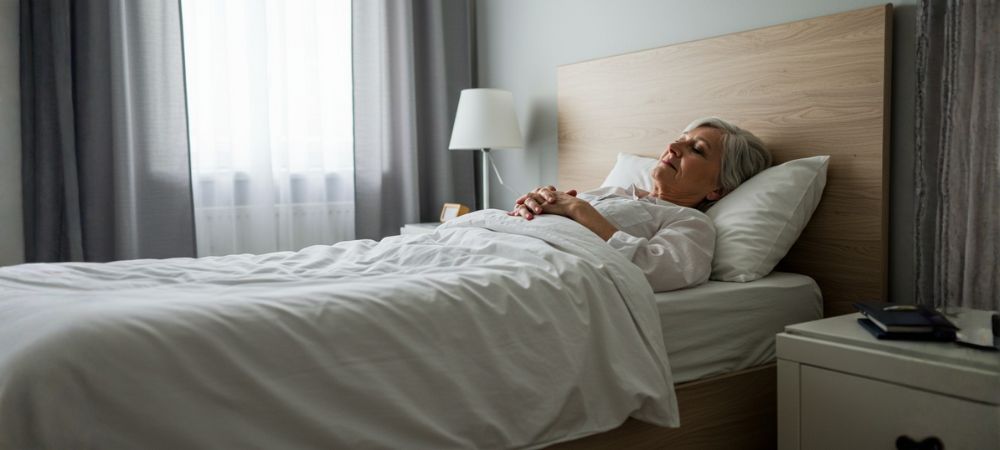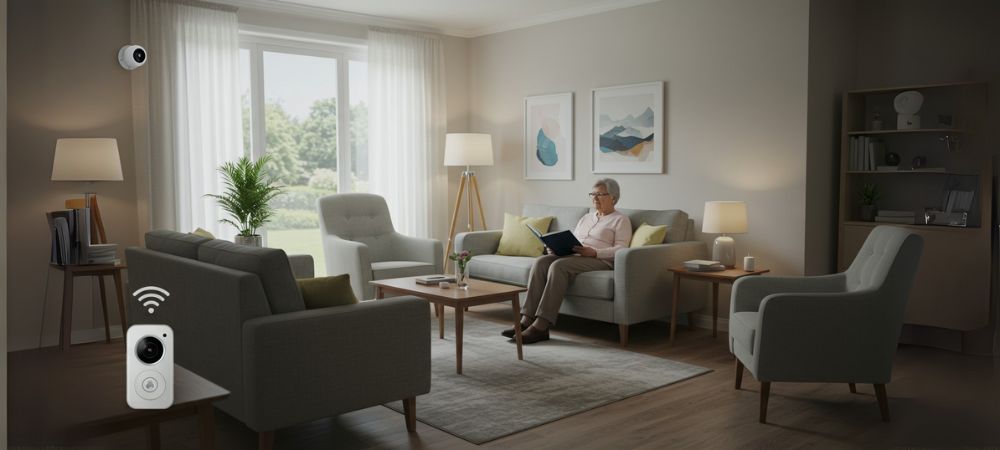Recently updated on October 1st, 2025 at 10:59 am
Introduction
Every single second of every day in the United States, an older adult falls, making it the leading cause of injury for this age group. For families here in California, ensuring a home is safe isn’t just a nice-to-do; it’s a critical step in preserving a loved one’s independence and well-being. The statistics are alarming, and no one wants to risk their senior loved ones facing an accident that could diminish their quality of life or result in a serious injury.
This guide provides a comprehensive, room-by-room checklist to help you identify and eliminate common household hazards, creating a safer environment for your loved one to age in place comfortably. A key focus will be on elderly fall prevention throughout the home.
Why ‘Senior-Proofing’ is the Foundation of Aging in Place
What is Aging in Place?
Aging in place refers to the ability of seniors to remain in their own homes as they age, rather than moving to an assisted living facility or nursing home. It’s a deeply desired option for the vast majority of seniors, as it allows them to maintain their independence, continue living in familiar surroundings, and retain a sense of control over their lives. However, to make aging in place a reality, it’s essential to ensure that the home is not only comfortable but safe. This includes crucial considerations for areas like the bathroom, where Bathtub Safety For Elderly is paramount.
Senior-Proofing: The Key to Safety

Senior-proofing a home is a proactive process aimed at removing or reducing risks that could lead to accidents or injuries. This process involves adapting the home’s environment to meet the evolving needs of seniors. From installing grab bars in bathrooms and facilitating bathing assistance, to making the kitchen safer for elderly cooking, every step taken to modify the home plays a significant role in fall prevention for the elderly and helps them continue living independently and safely.
The California Angle
This checklist has been created with the specific needs of California seniors in mind. Whether you reside in single-story homes in the Valley or multi-story homes in Orange County, it considers the unique aspects of local housing styles and the challenges that come with them. No matter where you live in Southern California, this guide will ensure that your loved ones’ home is prepared for aging in place.
The Room-by-Room Senior Safety Checklist
General Living Areas (Living Room, Hallways, and Entryways)
- Lighting is Key: Ensure bright, even lighting throughout the living areas. Install nightlights in hallways and bathrooms to help seniors navigate at night.
- Clear the Pathways: Walkways should be wide and free of clutter. Ensure cords and furniture do not block paths.
- Remove Fall Hazards: Secure or remove throw rugs, and tape down any loose edges on area rugs to prevent trips and falls.
- Check Electrical Cords: Keep cords tucked behind furniture or use cord covers to avoid tripping hazards.
The Kitchen: The Heart of the Home
- Easy-to-Reach Items: Frequently used dishes, food, and cookware should be stored at lower, easily accessible shelves to prevent reaching and straining.
- Appliance Safety: Ensure that all appliances are equipped with automatic shut-off features. Clearly mark the “on” and “off” positions on the stove to avoid accidents.
- Good Lighting: Install under-cabinet lighting to illuminate work surfaces and reduce the risk of accidents due to poor visibility.
- Secure Seating: Have a sturdy chair or stool available for seniors to rest while cooking or washing dishes.
The Bathroom: The Highest-Risk Area
- Install Grab Bars: Place grab bars inside and outside the shower or tub and next to the toilet. (Note: Towel racks are NOT a substitute.)
- Non-Slip Surfaces: Use non-slip mats or decals inside the tub or shower, and place a non-skid bath mat on the bathroom floor.
- Improve Accessibility: Consider installing a raised toilet seat for ease of use and a shower chair or bench for added stability while bathing.
- Set Water Temperature: Lower the water heater temperature to 120°F to prevent the risk of scalding.
The Bedroom: A Safe Haven for Rest

- Clear Path to the Bed: Ensure the path from the door to the bed is clutter-free, with no obstacles to navigate in the middle of the night.
- Bedside Accessibility: Keep a lamp, phone, and flashlight within easy reach from the bed to make it easier for seniors to access these essential items in the dark.
- Appropriate Bed Height: Ensure the bed is at an appropriate height, where the feet touch the floor when seated on the edge, reducing the risk of falling when getting in or out.
- Nightlights: Place nightlights along the path to the bathroom to prevent falls during nighttime trips.
Stairs and Outdoor Areas
- Secure Handrails: Ensure sturdy handrails are installed on both sides of all stairways. If possible, add handrails to outdoor walkways as well.
- Adequate Lighting: Stairways and outdoor walkways should be well-lit, particularly at the top and bottom of stairs. Install motion-sensor lights to automatically illuminate pathways at night.
- Clear Walkways: Keep exterior paths free of debris, overgrown plants, and clutter that could pose a tripping hazard.
- No-Step Entry: If possible, create a ramp or no-step entry to make it easier for seniors to enter and exit the home.
Beyond the Checklist: When a Safe Home Still Isn’t Enough
A perfectly senior-proofed home is a crucial first step. But what about the human element? A safe environment alone doesn’t prevent loneliness, help with medication reminders, or provide assistance with personal care after a fall. That’s where professional in-home care services come in.
In addition to fall prevention, a trained caregiver can offer supervision, assistance with daily tasks, and companionship, all while ensuring that the senior feels safe and supported. Home safety for seniors is not just about the physical environment; it’s about creating a holistic support system that combines a safe home with compassionate, professional care.
Let Us Provide a Professional Eye: Your Free Home Safety Assessment

Feeling overwhelmed by the checklist? Let us help. As part of our commitment to the community, Loving Homecare Inc. offers a free, no-obligation home safety assessment for seniors, including home modifications for seniors.. One of our experienced care managers will walk through the home with you, apply this checklist, and offer personalized recommendations for aging in place.
We’ll assess the elderly fall prevention strategies in your home, guide you in creating a safe living space, and even suggest potential adjustments to make your home more accessible. From bathroom safety for seniors to kitchen safety for elderly, we’ve got you covered. Take the first step toward peace of mind and a safer home for your loved one.
Contact Us Today
Take the first step toward ensuring your loved one’s safety by scheduling a home safety assessment for seniors with Loving Homecare Inc. Don’t wait until it’s too late. A little preparation goes a long way in preventing falls and injuries.
We are here to help with fall prevention assistance, in-home caregiver services Southern California, and senior care Orange County. Trust Loving Homecare to help your loved ones enjoy their golden years in a safe, supportive environment.
Conclusion
By completing the home safety checklist for seniors, you can significantly reduce the risk of accidents and injuries for your elderly loved ones. The room-by-room approach ensures that no detail is overlooked, from bathroom safety for seniors to stair safety for elderly. And remember, while a well-designed home is critical, pairing it with compassionate, professional care can make all the difference. Contact Loving Homecare today for a free assessment, and let us help you ensure the safest environment possible for your loved ones.
